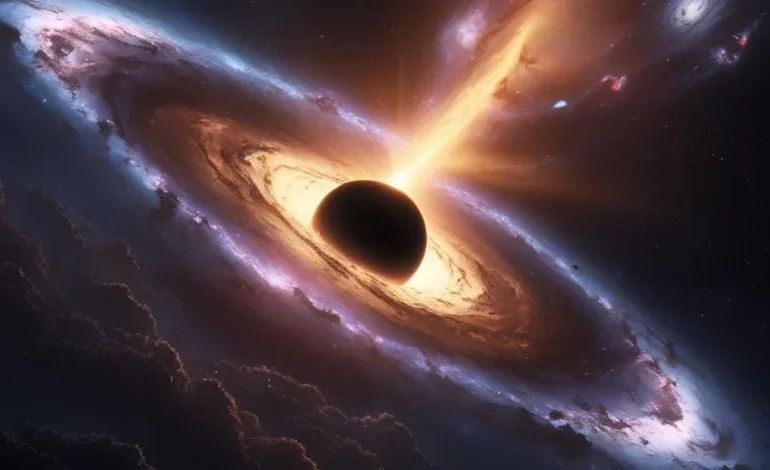A team of physicists has developed a new theoretical framework that may bring science a step closer to solving one of its biggest mysteries: how gravity and quantum mechanics work together, Space.com reports.
Their findings suggest that black holes, long considered enigmatic cosmic phenomena, may hold the key to uncovering a theory of quantum gravity—a long-sought unification of the two major pillars of modern physics.
Published in A Letters Journal Exploring the Frontiers of Physics on June 19, the study introduces quantum corrections to Einstein’s theory of general relativity, providing what the researchers describe as an alternative “quantum recipe” for creating black holes. These results indicate that black holes may exist not only as described by classical physics but also in new forms under quantum gravitational conditions.
“This work is a step toward understanding how quantum mechanics and gravity work together, a major unsolved problem in physics,” said lead author Xavier Calmet, a theoretical physicist at the University of Sussex.
While general relativity is exceptionally effective at describing gravity on large, cosmic scales, and quantum mechanics is the best framework for understanding the subatomic world, the two theories remain fundamentally incompatible. The absence of a unified framework—known as quantum gravity—has persisted for nearly a century.
A central motivation behind the study is the issue of singularities at the heart of black holes, where the mathematics of general relativity breaks down and physical quantities such as density become infinite. Such infinities signal that the theory is incomplete and suggest the need for a deeper, quantum-level description of gravity.
“Black holes appear as solutions to Einstein’s equations, but at their core lies a singularity where known physics fails,” Calmet explained. “A quantum theory of gravity is needed to describe what happens in those regions.”
Calmet and his collaborators used tools from quantum field theory to make progress without needing a complete theory of quantum gravity. They calculated quantum corrections to Einstein’s equations that would be required under any future theory that reconciles quantum mechanics and gravity. This allowed them to identify new types of black holes—distinct from those predicted by general relativity alone.
“These new solutions aren’t just modifications of existing black holes,” said Calmet. “They represent entirely new configurations that only exist within a quantum gravitational framework.”
However, these theoretical black holes cannot yet be directly distinguished from classical ones. Because general relativity and quantum gravity are expected to agree on large scales, observational tests—such as those using gravitational waves or event horizon imaging—may not reveal clear differences.
“The astrophysical black holes we observe could be described by our quantum solutions, but since both models look the same at great distances, it’s extremely difficult to tell them apart with current technology,” Calmet said.
The implications extend beyond black hole physics. One of the study’s key insights is that progress in quantum gravity may be possible without knowing the full theory—a hopeful development in a field that has struggled with testability. Leading theories like string theory require extra dimensions and are currently beyond experimental reach.










The latest news in your social feeds
Subscribe to our social media platforms to stay tuned